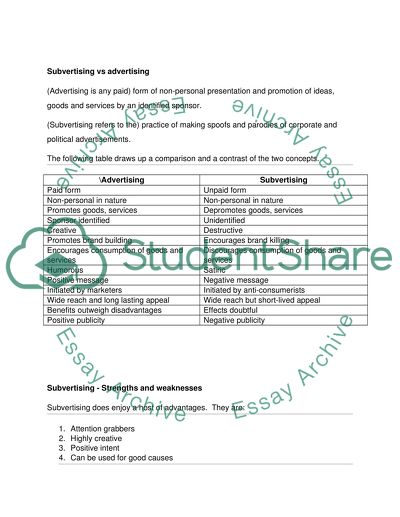Cite this document
(“Subvertising and advertising culture Essay Example | Topics and Well Written Essays - 2250 words”, n.d.)
Retrieved from https://studentshare.org/marketing/1420200-subvertising-and-advertising-culture
Retrieved from https://studentshare.org/marketing/1420200-subvertising-and-advertising-culture
(Subvertising and Advertising Culture Essay Example | Topics and Well Written Essays - 2250 Words)
https://studentshare.org/marketing/1420200-subvertising-and-advertising-culture.
https://studentshare.org/marketing/1420200-subvertising-and-advertising-culture.
“Subvertising and Advertising Culture Essay Example | Topics and Well Written Essays - 2250 Words”, n.d. https://studentshare.org/marketing/1420200-subvertising-and-advertising-culture.


